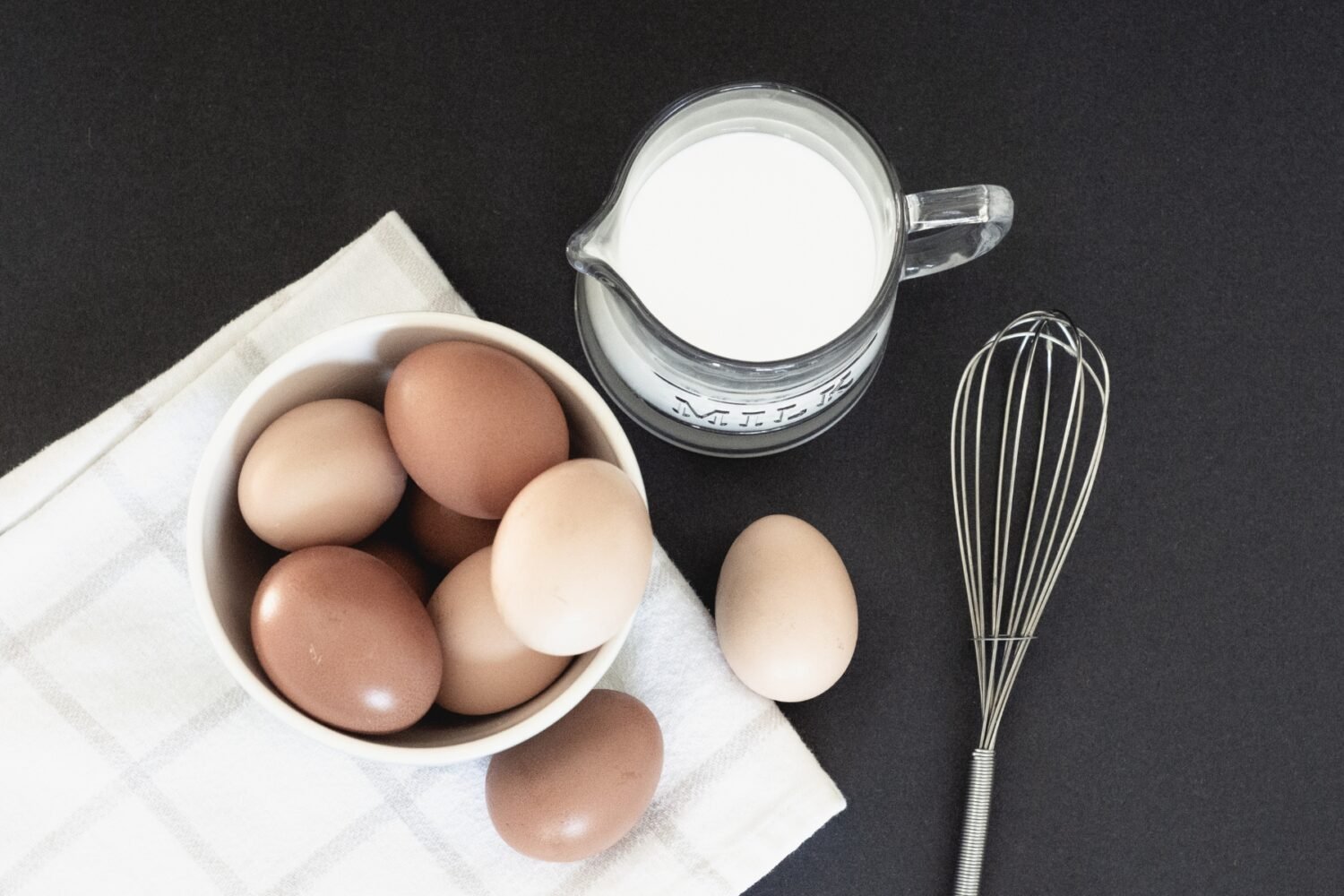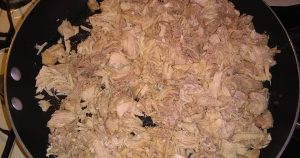Some of the links in this post may contain affiliate links for your convenience. As an Amazon associate I earn from qualifying purchases.
We have an abundance of milk and eggs on our farm due to our milk cow and a flock of laying hens. Production slows a bit in winter, so I preserve eggs and milk to tide us over in the cooler months. In the summertime, though, we run two fridges just to keep up with it all! Long-term storage of milk and eggs also offers the added benefit of freeing up our second fridge for other purposes.
These are some of the different ways I’ve experimented with to save the precious bounty.
Do I Freeze, Can, or Dehydrate?
Both of these dairy items are what I consider prepper food essentials. I focused on the freezing, canning, and dehydrating methods to preserve them, although there are others.
Instructions for completing each method, pros and cons, and my recommendations are below. You decide which one is best for you and your family, and your food storage needs.
Freezing: Takes up a lot of space in the freezer, but the prep is quick and easy
Freezing is the least time-consuming method for long-term storage, but it is also the most energy-dependent one.
Eggs and milk can be frozen in many different containers: freezer bags, jars, plastic freezer containers. They perform much like the fresh version when thawed and used.
Freezing Milk
If using farm-fresh raw milk, freeze the cream separately. When thawed, the cream will sit on top of the milk in flakes and the two will not mix, no matter how hard you shake the jar! To freeze milk:
- Pour it into your chosen container, leaving room for the milk to swell. My container of choice is Ziploc freezer bags. I pour a 1/2 gallon of milk in a 1-gallon freezer bag.
- Lay it flat in the freezer until frozen solid. They’re easy to stack this way.
Freezing Eggs
Preparing eggs for freezing is also extremely quick and easy.
- Break them into a bowl
- Beat to combine the yolks and whites, or push through a strainer
- Pour them into your container. To save space, I pour the eggs into an ice cube tray. Once frozen, remove them from the tray and place them in a freezer bag.
- Label and freeze.
Frozen Egg Equivalencies
- 1 “egg cube” = approximately 1 egg
- 3 tablespoons frozen, thawed egg = 1 whole fresh egg
- 2 tablespoons egg white = 1 egg white
- 1 tablespoon yolk = 1 egg yolk
The beauty of freezing eggs in smaller amounts, such as in an ice cube tray, is that they thaw quickly. I can throw together a really quick meal. Between quiches, frittatas, and even “breakfast for dinner,” I’m never at a loss for a great egg-based recipe!
Canning: Works great for milk, but turns eggs green
This method works great for preserving milk, but I don’t recommend it for eggs.
Canning Milk
I’ve canned milk for a long time and used it with much success. The result is most like the evaporated milk purchased at the grocery store. It has a slight caramel color and tastes most like fresh milk when diluted 1/2 and 1/2 with water.
How To Can Milk in a Pressure Canner
These are basic instructions and require some canning knowledge to complete.
- Fill pressure canner to fill line with tepid water. Do NOT pre-heat the canner, leave the stove off while you prepare the jars.
- Pour milk into sterilized jars, and add warmed lids and rings. (It isn’t necessary to warm the milk before adding it to the jars.)
- Place jars of milk in a pressure canner and attach the canner lid. Turn the stove onto a med-high heat and allow the canner to heat and the steam to vent for ten minutes.
- To safely can your milk, verify proper altitude adjustment. For my altitude of less than 1000 feet, I place the 10lb weight on my canner and let the pressure build just to 10 lbs.
- Turn the stove off and let the canner de-pressurize naturally. Remove jars and set them on a towel on the counter to cool.
- After 24 hours, remove rings and check seals.
Canning Eggs
Canning eggs is not a safe canning practice. There are no safety guidelines. However, I will tell you my own experiences with it.
When I started doing some research, I found some references to this method and pieced together some basic instructions for both water bath and pressure canning eggs. Those instructions warned that the eggs swell quite a bit while processing and turn green after sitting on the shelf. I can testify this is what happens. They turned green while they were canning, much like over-cooked hard-boiled eggs.
Not knowing how much they would swell, I only filled my jars about half full. I didn’t want them to overflow while canning. As a result, I couldn’t can them in a water bath; the jars had too much headspace and floated to the top of the water in the canner.
Therefore, my own experimentation resulted in eggs that were unappetizing.
Dehydrated: Great Long-term Storage Option Using Minimal Space
The only downfall to this method is the amount of heat the dehydrator puts out. In the hot summer months, it might be a better idea to freeze the eggs and then thaw and dehydrate them when it is cooler outside (especially if you don’t have an air conditioner in your house.)
If you don’t live in a humid area, you could try using the dehydrator outside. In humid areas, however, the additional moisture in the air could strain the unit and cause failure.
Dehydrating Eggs
Powdered eggs don’t sound appealing, but when reconstituted, have a taste and texture very similar to fresh or frozen eggs.
You can beat the eggs together and dry them or dry the whites and the yolks separately. Reconstituted eggs can be used the same as fresh eggs. You can even use the dried egg whites to make a nice fluffy meringue!
I dried a dozen eggs and blended them into crumbles and they fit into a 12-ounce jar. If I had blended them even more, into a powder, I’m sure I could fit that whole dozen into a 1/2 pint jar. That would be 4 dozen dehydrated eggs per quart jar. What a great use of space!
How To Dehydrate Eggs
- Line the trays of your dehydrator with parchment or wax paper, folding up all the edges to form a tray so the liquid eggs won’t slide off and make a mess.
- Break your eggs and stir to combine, or separate them and dry the whites and yolks on two different trays.
- Slowly pour the egg onto the tray, moving your bowl around so as not to pool them in the middle. I also used a spoon to spread the eggs to the edges of the tray. You will want a very thin layer so they dry evenly.
- Dehydrate at 135 degrees for 6 to 8 hours or until no moisture is left. It took about 6 hours for a dozen eggs on one tray to fully dehydrate in my Excalibur 9 tray model. I stirred about halfway through as skin had formed on the top and the outside edges.
- Once dried, you can crumble the eggs up and store them in a jar with a tight-fitting lid or grind or blend the crumbles into a powder. I put the egg crumbles in the blender and ground them up.
- To use, reconstitute with hot water then cook as normal. When using for baking, simply add the powdered eggs with the dry ingredients and add the same amount of water with the wet ingredients.
How to Reconstitute Dried Eggs
- 1 tablespoon powdered egg + 1 tablespoon hot water = 1 egg
You can also supplement with commercial dried eggs.* And check out this tutorial if you’re wondering how to use dried eggs in cooking.
*ThriveLife’s powdered egg mix is confusingly labeled “scrambled egg mix.” However, it ONLY contains egg and is therefore equivalent to Auguson Farm’s Dried Whole Egg Powder. To further muddy the waters, Auguson Farms also sells a scrambled mix, but it contains milk, oil, and salt, and is NOT the same product as ThriveLife’s Scrambled Egg Mix. The lesson here? Read the labels, folks!
Dehydrating Milk
I have not attempted to dehydrate milk at home. However, before we had our milk cows I always kept a couple of boxes of dried milk in my pantry for emergencies. Learn about the versatility of dried milk here. You can even use it to make homemade yogurt!
Bonus Ways to Preserve Eggs
As mentioned in the beginning, there are other ways to store eggs, at least, long-term. Research if any of these techniques are suited to your purposes.
- Pickling – Store eggs in a vinegar brine solution, mixed with spices. They will keep in the fridge for many months and make a great snack.
- Waterglassing – Eggs are submerged, pointed side down, in a solution of sodium silicate. Fresh eggs can be added daily. They could last as long as two years.
- Coating with mineral oil – Coat eggs in food-grade oil. Store in original container pointed side down. Flip eggs monthly to maintain yolk integrity.
- Storing in salt – Coat eggs in food-grade oil to prevent dehydration. Then, layer in salt, no egg touching another. They should last about six months.
The Methods I Chose to Preserve Milk and Eggs
After my experimentation with all of these different methods to preserve eggs and milk, I will most definitely continue to can my extra milk in jars.
For putting up eggs, dehydrating is my choice. I can’t say that I will want to eat them like scrambled eggs in the winter all of the time, but I am excited about having an abundance available for all of my holiday baking!
Even if you’re not trying to free up a second fridge, you never know when there’ll be a power outage. Not depending solely on your refrigerator is important! Employing multiple preservation methods helps better achieve layers of food storage security.
Which methods will you use to preserve eggs and milk?
Originally published 12/19/2019. Updated with contributions from Courtney Wollam.

















